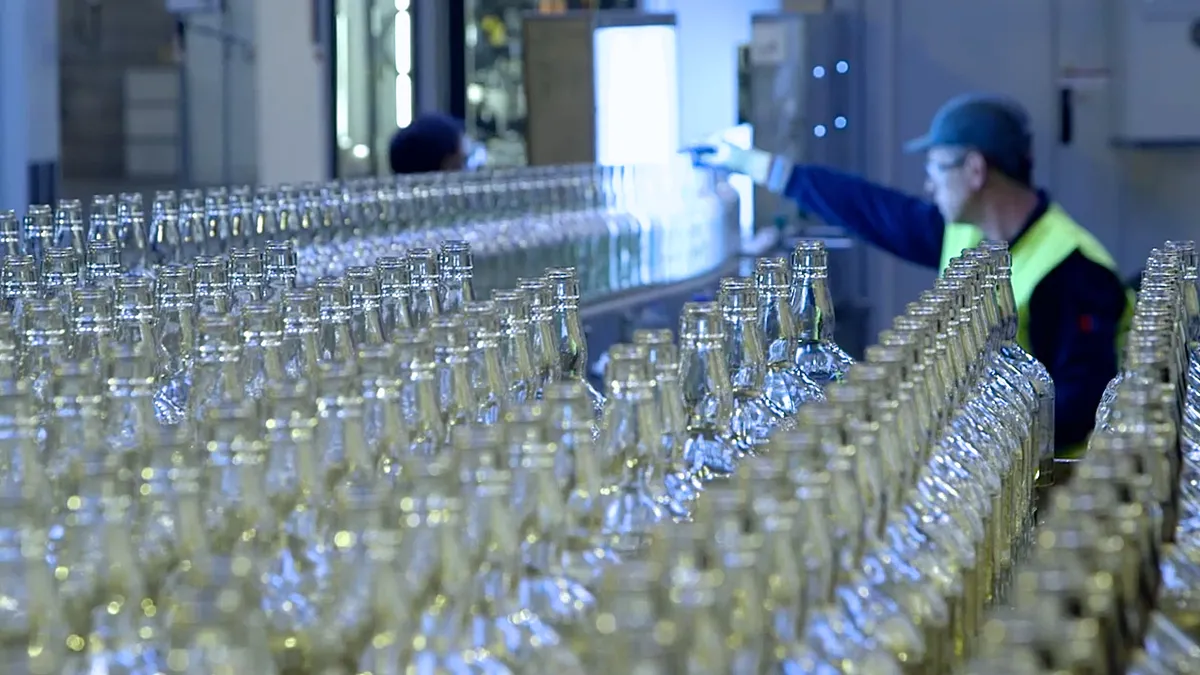This is a contributed op-ed written by Scott DeFife, president of the Glass Packaging Institute. Opinions are the author's own.
Over the winter holidays, many readers may have spotted a variety of stories suggesting supply chain disruptions have created a dire "glass shortage." It's a false narrative.
After getting past the headlines, nearly all of these accounts were connected to a specific anecdote related to imported filled or unfilled bottles. Some of these narratives quickly jumped to linking anecdotal issues of a glass shortage to price increases, and unrelated challenges, often with little to no context or factual basis.
Unfortunately, recent narratives are evolving and the circularity of these misleading stories continue to perpetuate myths, a couple of which must be addressed before they snowball into more false narratives.
Tariffs aren't straining supply
There have been assertions that most of the glass bottles used in North America came from China or Asia, and that the implementation of 25% tariffs on glass made in China is making it harder to come by due to a shift in manufacturing to Europe and South America.
Both of these suggestions are incorrect. While some imports have shifted to other countries during the past two years due to the tariffs, overall imports from other countries have made up for the decrease in bottles from China.
Most of the glass used in the U.S. has never been imported from China, or even from overseas. The U.S. imported a total 2 billion empty glass containers for food and beverages from China in 2018, before the tariffs were enacted, according to data from the U.S. Department of Commerce and the U.S. International Trade Commission. Contrast that to U.S. manufactured shipments in 2018, which number roughly 25 billion food and beverage bottles and jars.
In fact, total U.S. imports from all countries in 2018 equated to only 25% of domestic glass container shipments, according to a recent GPI report compiled by Precision Consulting. If you include our North American partner countries (Canada and Mexico) in domestic totals, the percentage of overseas imports is even lower. Although end of year 2021 import numbers will likely surpass 2018 numbers, import volumes will still be less than 30% of domestic production volumes.
There's not a shortage of brown glass — or of any other color
We should also address a new narrative around shortages for specific colors of glass, such as shortages of "brown glass" generally referred to as amber in the industry.
Many do not realize that there is nothing inherently different about amber glass compared to flint (clear) glass or other colors except for the mineral or oxide used to give it its color. When using recycled glass as a part of the manufacturing batch, amber would go back into amber, but the raw materials are essentially the same.
Further, there is no shortage of supply to make bottles of any color, regardless of recycled glass availability. A company may have experienced disruptions to their bottle supply due to challenges with weather, logistics or the pandemic — but this is not an indication of a lack of amber glass at-large.
The "everything shortage" is a legitimate story to cover, and supply chain challenges are impacting almost every sector of our economy. But it is important that we understand the facts during times like these. While the logistical issues all industries face are no doubt impacting some businesses, North American glass manufacturing remains strong, growing and capable of taking on new customers.
This story was first published in our Procurement Weekly newsletter. Sign up here.













